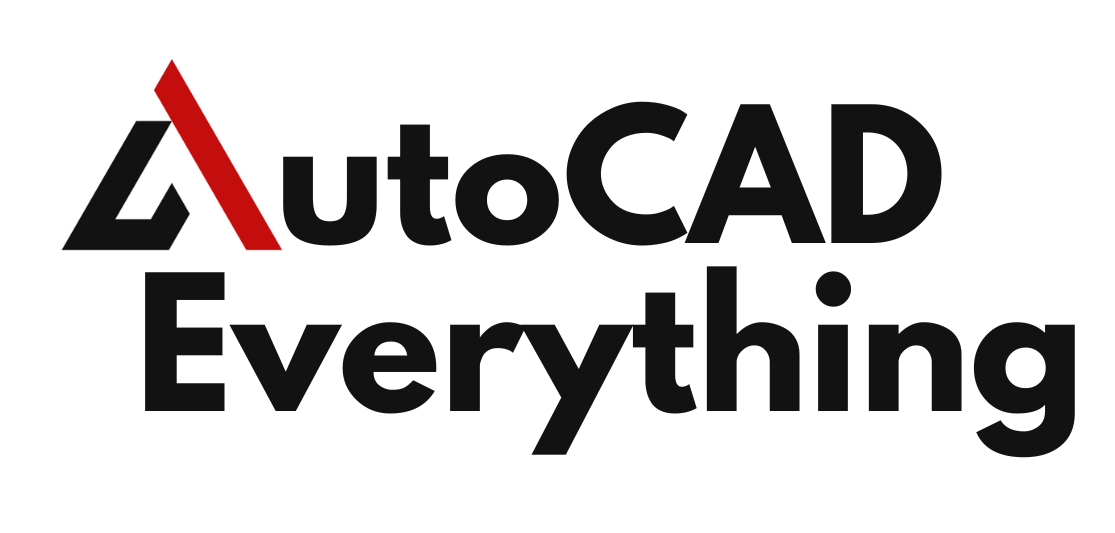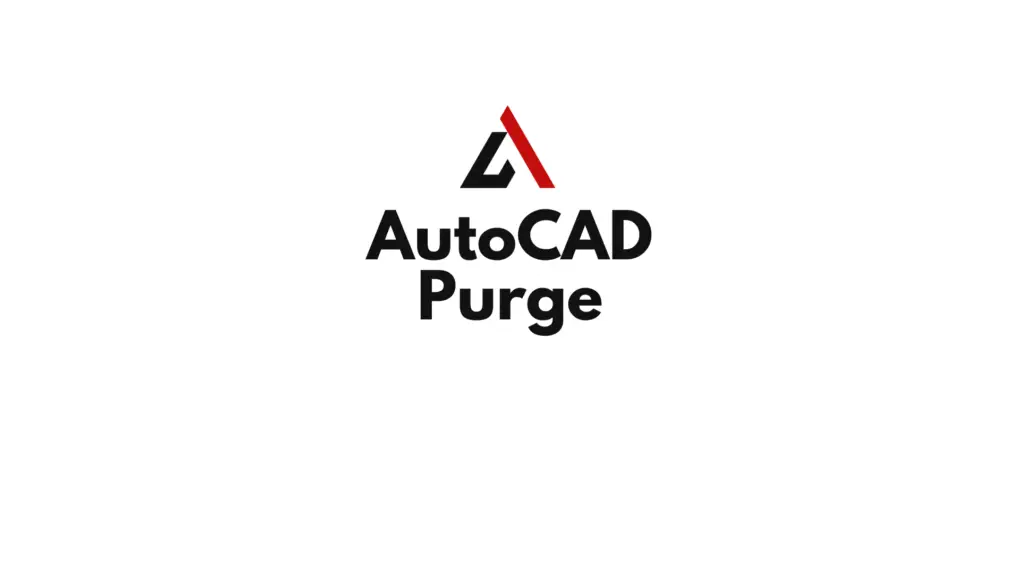AutoCAD is a powerhouse when it comes to creating detailed drawings and designs. However, as these files grow in complexity, they can accumulate unnecessary objects, unused layers, and redundant data that hinder performance and make the drawings sluggish. If you’ve ever experienced lag, slow processing, or unnecessary file bloat, it’s likely that your drawing needs a thorough cleanup. Enter the AutoCAD purge and cleanup process, a vital toolset that keeps your project lean, fast, and efficient.
In this guide, we will explore how to purge unnecessary objects in AutoCAD and how to clean up your drawings to enhance overall performance. Whether you’re a seasoned designer or just getting started, mastering these processes will help you maintain cleaner, faster, and more manageable AutoCAD drawings. Let’s dive into the steps and techniques you can use to ensure your designs are clutter-free and optimized for smooth performance.
Table of Contents
Why is Purging and Cleaning Up AutoCAD Drawings Important?
AutoCAD files, especially those used over a long period or involving multiple contributors, tend to collect unnecessary objects like unused layers, blocks, line types, and other elements. These can significantly bloat the file size, making it harder to work with, slowing down performance, and even causing crashes in extreme cases. By regularly purging and cleaning up your drawings, you can:
- Reduce file size: Unused objects and redundant data can drastically increase the file size.
- Improve performance: A leaner file runs faster, improving productivity.
- Minimize errors: Reducing unnecessary objects decreases the chances of accidental modification or errors.
- Enhance organization: Clean drawings are easier to navigate, especially in large projects.
Taking the time to purge and clean up ensures that your AutoCAD files remain agile and responsive, even as your project grows.
Understanding the AutoCAD Purge Command
The Purge command in AutoCAD is a powerful tool used to remove unused or unnecessary elements from a drawing. This includes blocks, layers, dimension styles, line types, and more. Using this command regularly can streamline your workflow and help maintain an efficient drawing environment.
How to Use the Purge Command
- Open your drawing in AutoCAD.
- Type
PURGEinto the command line and press Enter. - A Purge dialog box will appear, showing a list of categories (e.g., blocks, layers, dimension styles) that contain items that can be purged.
- Select the objects you want to purge. You can choose to purge individual categories or “Purge All” to remove everything unused.
- Click Purge to remove the selected objects.
- Once the purge is complete, close the dialog box.
Tip: After purging, it’s good practice to save your file under a new name or version to ensure that the purged elements are permanently removed.
What Can Be Purged from an AutoCAD Drawing?
Not everything in an AutoCAD drawing can or should be purged. Some objects are required for the integrity of the drawing, while others are extraneous and unnecessary. Here’s what you can typically purge:
- Unused layers: Layers that are no longer in use but still clutter the drawing.
- Unused blocks: Blocks that were inserted but are not used in the current version of the drawing.
- Unused dimension styles: Old dimension styles that no longer apply to your current work.
- Line types: Redundant or unused line types that do not contribute to the active drawing.
- Text styles: Unnecessary text styles from earlier design phases.
Each of these elements contributes to unnecessary file bloat if left unchecked. Regular purging ensures your drawing is free from irrelevant data.
The Purge Nested Items Feature
One particularly useful aspect of the AutoCAD purge tool is the ability to purge nested items. These are objects that are part of blocks or groups that might not be used directly in the drawing but are still retained within the block structure. To clean out these elements, follow these steps:
- In the Purge dialog box, select the Purge Nested Items option.
- AutoCAD will identify and remove nested elements that are no longer required.
This deeper level of cleaning ensures your file is as lean as possible by addressing hidden or embedded elements that are otherwise easy to overlook.
Additional Cleanup Techniques for Better AutoCAD Performance
Purging is only part of the process when it comes to cleaning up an AutoCAD drawing. Additional techniques can further improve the efficiency and speed of your files:
Using the Audit and Recover Commands
The Audit and Recover commands are essential tools for identifying and fixing errors within a drawing. These commands help find corrupt or problematic data that might be causing issues with your file.
- Audit: This command checks the current drawing for errors and offers to fix them. To use it, simply type
AUDITin the command line, hit Enter, and choose to fix the errors. - Recover: This command is useful when dealing with corrupted files. Use
RECOVERto scan and repair drawing files that cannot be opened normally.
By using these commands alongside purging, you ensure that your drawing is free from errors and corruption, further boosting performance.
Cleaning Up Duplicate Objects with Overkill
Another common issue in AutoCAD drawings is the presence of duplicate objects, such as overlapping lines or duplicate blocks. These unnecessary duplicates can slow down your drawing’s performance. AutoCAD’s Overkill command helps remove duplicates.
- Type
OVERKILLin the command line. - Select the objects you want to evaluate.
- The Overkill dialog box will appear, showing the types of duplicates you can remove (lines, arcs, blocks, etc.).
- Choose the options that best suit your needs and click OK to remove the duplicates.
By removing redundant elements, Overkill reduces file clutter and helps your drawing run more efficiently.
Best Practices for Keeping AutoCAD Drawings Clean
Cleaning up an AutoCAD drawing is not a one-time event. To maintain efficiency, you should incorporate regular cleanup routines into your workflow. Here are some best practices to follow:
- Purge regularly: Don’t wait until your drawing becomes slow or bloated. Purging after every major revision keeps things manageable.
- Audit frequently: Regularly audit your files to catch and correct errors early.
- Use layer management: Organize your layers and remove unnecessary ones before the file grows too complex.
- Archive outdated elements: Instead of keeping outdated blocks and layers in your drawing, consider archiving them separately.
By adopting these habits, you’ll keep your drawings clean, lean, and ready for quick edits.
In conclusion, the AutoCAD drawing purge and cleanup process is essential for anyone who works with AutoCAD regularly. Removing unnecessary objects, fixing errors, and optimizing performance not only enhances productivity but also keeps your projects running smoothly without lag or file corruption. By mastering the tools and techniques discussed in this guide, you’ll ensure that your drawings remain efficient and easy to work with, no matter how complex they become.
Embrace the purge and cleanup as a routine practice in your workflow, and you’ll notice significant improvements in file performance, project management, and overall user experience.
FAQs
What is the difference between Purge and Audit in AutoCAD?
The Purge command removes unused objects such as layers and blocks, while the Audit command checks for and fixes errors within the drawing.
Can purging too often affect the drawing negatively?
Purging too often doesn’t negatively affect the drawing, but be cautious of purging objects that might be needed later. Always check what you’re purging.
How can I reduce the file size of an AutoCAD drawing?
You can reduce file size by purging unused objects, cleaning up duplicates with Overkill, and auditing for errors regularly.
What is Overkill in AutoCAD?
Overkill is a command that removes duplicate or overlapping objects in a drawing, such as lines or blocks, to optimize performance.
Is it necessary to use the Purge Nested Items feature?
Yes, Purge Nested Items helps remove objects hidden within blocks or groups that might not be actively used but still take up space.
How often should I perform a drawing cleanup in AutoCAD?
It’s best to perform a drawing cleanup after major revisions or before sharing the file with others to ensure efficiency and reduce errors.

